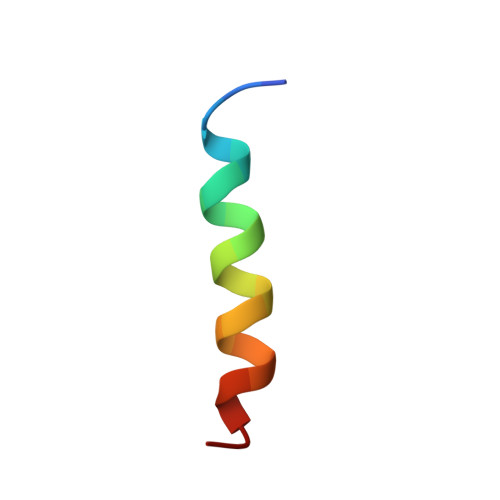De novo design of covalently constrained mesosize protein scaffolds with unique tertiary structures.
Dang, B., Wu, H., Mulligan, V.K., Mravic, M., Wu, Y., Lemmin, T., Ford, A., Silva, D.A., Baker, D., DeGrado, W.F.(2017) Proc Natl Acad Sci U S A 114: 10852-10857
- PubMed: 28973862
- DOI: https://doi.org/10.1073/pnas.1710695114
- Primary Citation of Related Structures:
5V2G, 5V2O, 5WOC, 5WOD - PubMed Abstract:
The folding of natural proteins typically relies on hydrophobic packing, metal binding, or disulfide bond formation in the protein core. Alternatively, a 3D structure can be defined by incorporating a multivalent cross-linking agent, and this approach has been successfully developed for the selection of bicyclic peptides from large random-sequence libraries. By contrast, there is no general method for the de novo computational design of multicross-linked proteins with predictable and well-defined folds, including ones not found in nature. Here we use Rosetta and Tertiary Motifs (TERMs) to design small proteins that fold around multivalent cross-linkers. The hydrophobic cross-linkers stabilize the fold by macrocyclic restraints, and they also form an integral part of a small apolar core. The designed CovCore proteins were prepared by chemical synthesis, and their structures were determined by solution NMR or X-ray crystallography. These mesosized proteins, lying between conventional proteins and small peptides, are easily accessible either through biosynthetic precursors or chemical synthesis. The unique tertiary structures and ease of synthesis of CovCore proteins indicate that they should provide versatile templates for developing inhibitors of protein-protein interactions.
Organizational Affiliation:
Department of Pharmaceutical Chemistry, University of California, San Francisco, CA 94158.















